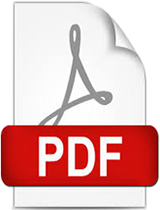
Report
Rwanda Poverty Assessment
Attachments [ 0 ]
More Details
The last poverty assessment for Rwanda was conducted in 1997. Three years after the genocide, the country was characterized by deep and widespread poverty, rock-bottom health indicators, and pervasive hunger and food insecurity. In real terms, gross domestic product (GDP) per capita was lower than it had been in 1960. In real terms, the economy quadrupled between 1995 and 2013. Enrolment in primary school is near universal and infant and child mortality are among the lowest in Africa. A large part of the population, including the extreme poor, is covered by public health insurance. This poverty assessment focuses on the evolution of poverty and other social indicators over the past decade (2000-1 and 2010-11). Using data from a variety of sources, mainly the three household living standards surveys (EICV) and the three demographic and health surveys (DHS) conducted during the past decade, the poverty assessment documents trends in monetary and non-monetary dimensions of living standards and examines the drivers of observed trends. The aim of the poverty assessment is to provide policy makers and development partners with information and analysis that can be used to improve the effectiveness of their poverty reduction and social programs.
Comments
(Leave your comments here about this item.)